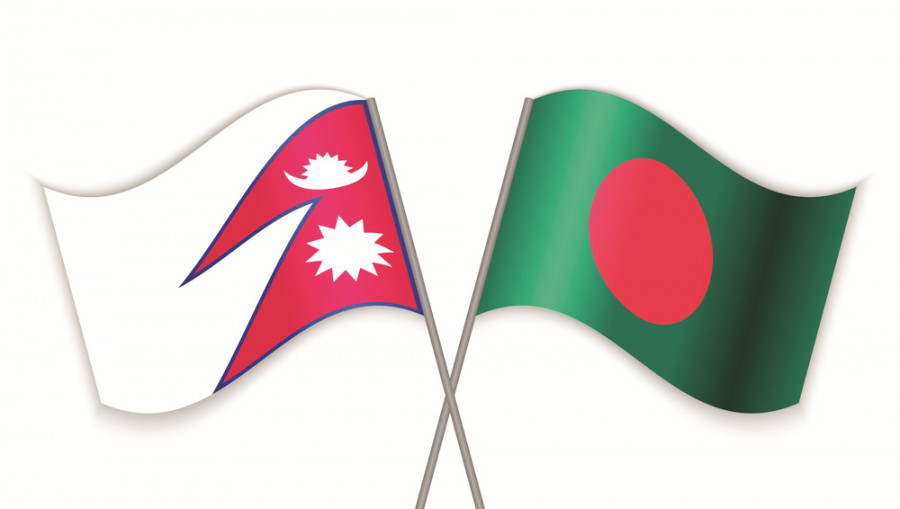KATHMANDU: The signing of a trilateral agreement among Nepal, India, and Bangladesh has paved the way for Bangladesh to receive 40 megawatts of electricity from Nepal.
The executive director of the Nepal Electricity Authority, Kulman Ghising, confirmed the completion of the agreement, emphasizing India’s crucial role in facilitating the signing process.
The agreement moved forward after the participation of the authority-NTPC Electricity Trading Corporation-Bangladesh Power Development Board.
The next step involves a meeting between Nepal and Bangladesh to determine the purchase and sale price for the 40 megawatts.
Ghising explained that since this agreement involves the governments of both Nepal and Bangladesh (GTOG), officials from both countries will determine the price. “All other agreements have been made. Now, the purchase and sale rates between Nepal and Bangladesh are yet to be finalized,” stated Ghising.
He further added that the price will be settled during the Nepal-Bangladesh meeting, following the completion of the trade margin between India and Bangladesh. Subsequently, Nepal will begin supplying electricity to Bangladesh. Ghising emphasized that the purchase and sale price will be determined in the meeting between the two countries.
According to the tripartite agreement, India has granted permission for Bangladesh to sell approximately 40 megawatts of electricity using its land and infrastructure, as revealed by Prabal Adhikari, director of the Electricity Trade Department of the Authority.
This medium-term five-year agreement can be extended upon the mutual agreement of both nations. The only remaining task is the determination of the price, as stated by the official. The Nepali side is willing to show flexibility in pricing as the electricity transfer from Nepal to Bangladesh is a pioneering initiative, which will be decided by officials from both countries.
The official further explained, “There will be a meeting between India and Bangladesh regarding the transmission line and trade margin. Since this is a test case, we will determine the price so that Bangladesh can afford it. This will enable Bangladesh to purchase more electricity from Nepal in the future and undertake projects in the region.”
Bangladesh has expressed interest in constructing the 683 MW Sunkoshi third project in Nepal and importing its electricity. In the secretary-level meeting held between Nepal and Bangladesh in May, both nations agreed to jointly develop this project.
Additionally, the Indian company GMR has expressed its intention to sell 500 MW of electricity generated from the 900 MW Upper Karnali project to Bangladesh.
During the Nepal-Bangladesh secretary-level meeting in August, the two countries agreed to import 50 megawatts of electricity from Nepal in the first phase.
They also decided to request a tripartite electricity purchase and sale agreement involving Nepal Electricity Authority, Bangladesh Power Development Board, and NTPC Electricity Trading Corporation for exporting electricity to Veramara, Bangladesh, via a high voltage direct current structure, which necessitated involving India due to the absence of a dedicated transmission line and a shared border.
As a result, both countries have sought permission from India for the use of infrastructure and land. In a Nepal-India secretary-level meeting held in February, India assured its commitment to provide the necessary project name and permission.
Nepal proposed the name “Likhu IV” at the time. However, considering the limited transmission capacity to export 51 MW to Bangladesh, the Nepal-Bangladesh secretary-level meeting on May 1 and 2 decided to export approximately 40 MW of electricity.
Currently, Nepal exclusively sells electricity in the Indian market. The Nepal Electricity Authority has secured approval for 752 megawatts in the Indian Energy Exchange Market (IEX), with a sales agreement for 200 megawatts over five years, according to the director officer.
Additionally, the authority still requires further consent and project approval for the 300 megawatts approved in the IEX and the 200 megawatts under the mid-term agreement.
The authority currently sells 452 MW of electricity from 10 projects in the “day ahead” market at IEX. With the onset of the rainy season, electricity production has reached approximately 2200 megawatts, as reported by the authority.
Approval from India is still pending for 18 projects submitted by the authority for electricity sales permission. The director informed that the authority has reduced leakage by 3 percent and sent requests for permission to sell electricity from 1010 megawatts generated by 18 hydropower projects.
The authority has submitted projects for both the “Day Ahead” and “Mid Term” categories. Presently, the connected capacity of the national transmission line stands at approximately 3100 megawatts, with the private sector accounting for around 2000 megawatts and the authority and its subsidiaries having a production capacity of roughly 1100 megawatts.

